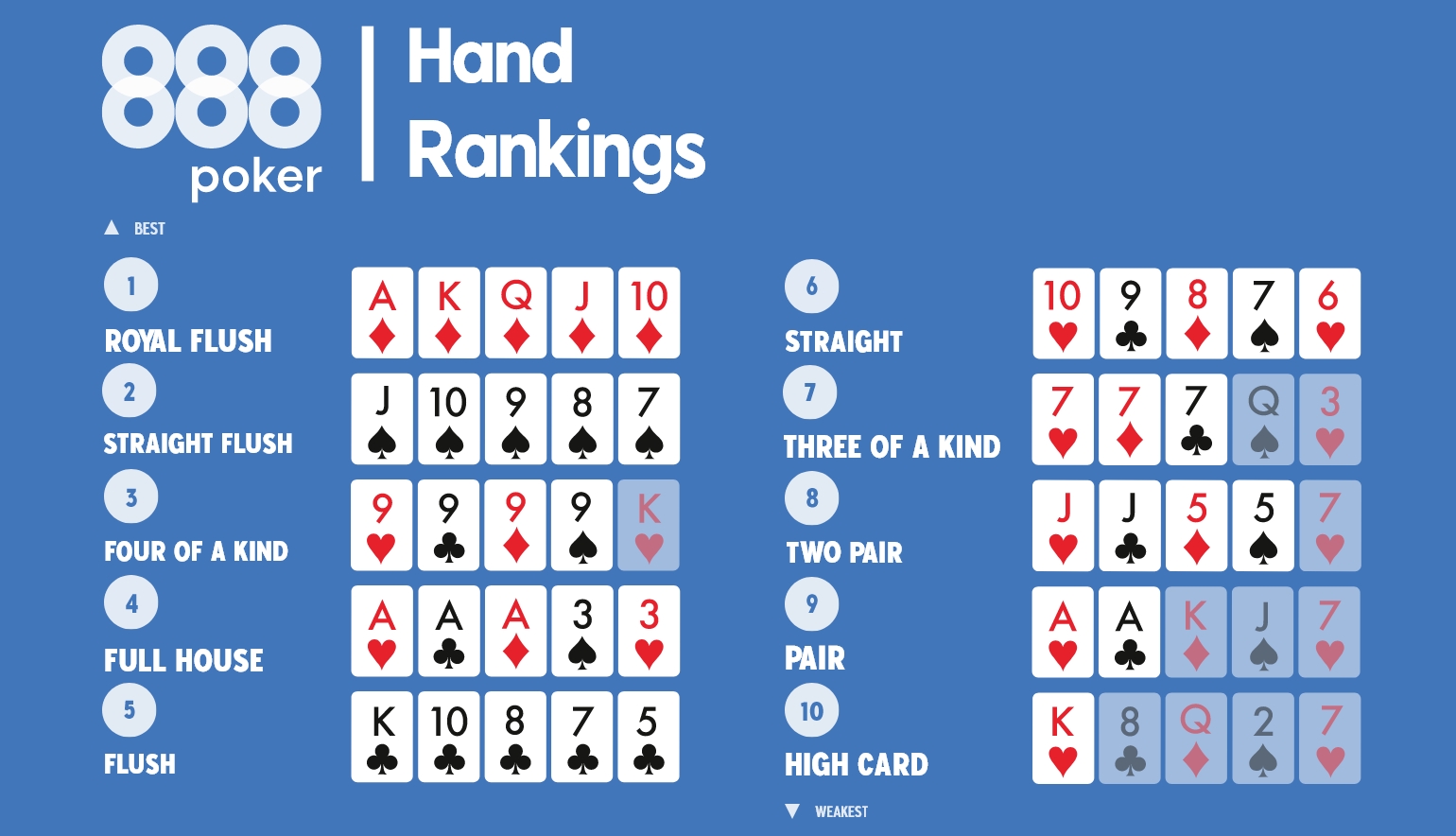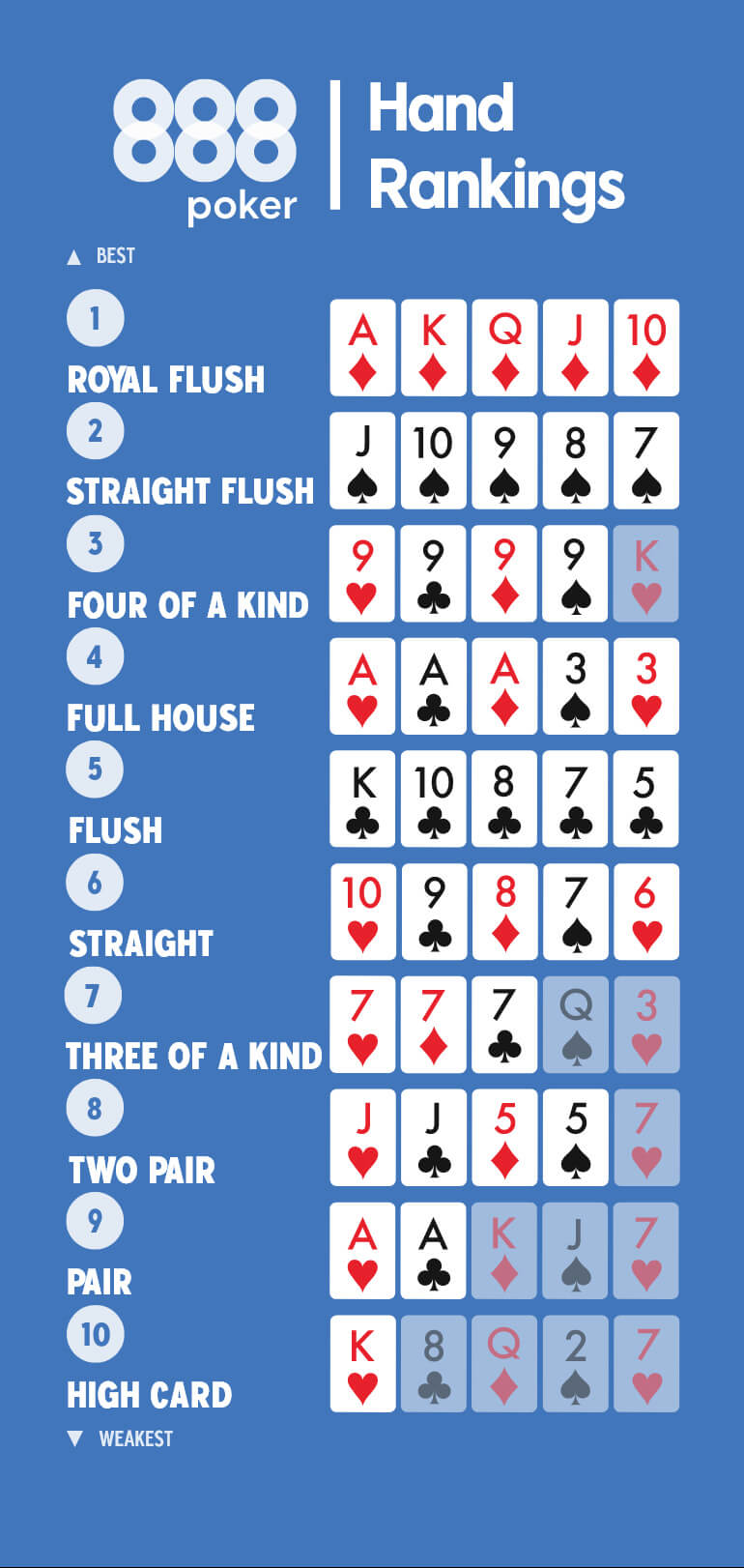"It's easy to learn in a minute, but takes a lifetime to truly master.\"

"It's easy to learn in a minute, but takes a lifetime to truly master.\"
This well-known phrase captures the essence of poker. If you're keen on diving into this captivating game, how to play poker , you’ve come to the right place.
We aim to keep our explanation straightforward as we delve into the principles and strategies of poker that dictate how the game is played.
Our primary focus will be on No-Limit Texas Hold'em, the game's most widely played variant, while also briefly exploring other kinds for context.
Among the topics we’ll cover are:
Cash games are designed for players to win money, whereas in tournaments, your objective is to rise to the top of the chip leaderboard for a shot at the big prizes. These formats function differently and we'll delve deeper into them later. Ultimately, the goal is to hold the strongest hand when it matters to secure the pot.
To win at poker, you either have to bluff against your rivals or by having the strongest hand at the conclusion (commonly referred to as the \" showdown \"). In this card game, your goal is to form the best possible five-card combination. Your hand can range from a simple high card to a magnificent Royal Flush.
Here's an overview of the highest-ranking hands you can achieve in traditional poker, listed from best to worst:

This guide will provide a concise overview of how to engage in poker hands, and below is an example. A No-Limit Texas Hold'em hand kicks off with each participant receiving two face-down cards, known as \"hole cards.\"
When it’s your turn, you always have the options to bet, call, raise, or fold.
Players can win by creating the best five-card hand from any combination of their two hole cards and the five community cards on the table.
After players are dealt their cards, a round of betting takes place, termed \"preflop.\" Each subsequent round of betting has its own name.
Flop – The first three community cards dealt are known as \"the flop.\" Remaining players can use these cards to attempt to form the top poker hand. Following this, another betting round occurs, starting with the first player still involved, sitting to the immediate left of the dealer button.
Turn – After completing the betting round on the flop, another community card is introduced, known as the turn (or Fourth Street). Players now have access to two hole cards and four community cards to create their optimal five-card hand.
A further betting round occurs after that, again commencing with the first remaining player just left of the button. The game continues to progress clockwise. Once all players have acted, this betting phase concludes.
River – The river (or Fifth Street) is the last community card dealt. A final betting round follows. If there's a showdown—when all betting actions have concluded—players reveal their hands. The player who last placed a bet, referred to as the last aggressor, must show their hand first. The player with the strongest five-card combination wins the pot, bringing the hand to a close and transitioning to a new one.
Example: In a $1/$2 No-Limit Hold'em match, you are the first player to act following the big blind. You encounter a $2 \"blind\" bet, which means you can choose to match that amount, increase it, or fold.
Assuming you raise to $6 holding A♦K♣, all other players fold until it reaches the player in the big blind, who chooses to add $4 to call.
The flop reveals A♣5♠6♥. The big blind acts first, with the choice to either check or bet. Since there hasn't been a bet yet, they decide to check, while you bet $10 for your top pair.
The big blind calls your bet, and the K♦ appears on the turn. Once more, your opponent checks. You then place a bet of $25 with your two pair. The big blind again calls.
Finally, on the river, the 2♣ completes the board. Your opponent checks again, and they call when you bet $100.
Once all actions are finished, it’s time to reveal your hands.
You display your two pair (A♦K♣ along with A♣K♦6♥ from the community cards, forming your best five-card hand).
Your opponent reveals a losing hand with A♥Q♠, resulting in just a pair of aces (combining their A♥Q♠ with A♣K♦6♥ on the table to form their best opening).
Congratulations, you won a nice pot!
That outlines how a hand operates, and now you understand the poker rules involved. The complexity arises with strategizing your hand while competing against others. There are various factors to consider, such as the dealer's location.
In most poker games, a specific dealer manages the dealing process. However, in home games, it's common for players to rotate the duties of dealing among themselves. poker games If there's an appointed dealer, a button helps identify who that is. This button shifts one position clockwise after each hand, indicating where the action commences each time.
The action always begins with the player directly to the left of the button.
Prior to dealing any cards, the player immediately to the left of the button is required to post (contribute) the small blind. Meanwhile, the player adjacent to them must post the big blind.
" are compulsory bets that create a competitive environment for players to engage in. Consider this: Without blinds, players would never experience blind losses by folding preflop.
These “ blinds Players would likely only act when dealt Aces, going all-in every time.
For instance, in a $1-$2 No-Limit Hold'em game, the player to the direct left of the button posts a $1 small blind, while the player thereafter pays a $2 big blind. These are obligatory blind bets that must be posted. If a player declines to do so according to poker regulations, they are required to sit out of that hand.
When competing against others, you have two options: tournament style or cash game (also known as a ring game), each with its own unique set of poker rules.
Close (Esc) Close (Esc) While the basic concepts mentioned remain consistent, there are four notable distinctions.
Blinds: In cash games, the blinds remain constantly fixed (such as $1-$2, $2-$5, etc.) and do not escalate. However, in
Antes serve primarily to enhance the pot's size during preflop play, providing players with greater motivation to contest the
dead money that accumulates in the center.
Keep in mind that traditional antes are increasingly being replaced by either \"button\" or \"big blind\" antes (a larger ante from one player) to streamline the pace of the game, particularly in tournament play.
1. What are the essential poker rules that beginners should know?
2. How do the rules of poker determine the winner during a showdown?
3. Are there different rules for cash games and tournaments?
Indeed, there are differences. In tournaments, blinds increase as the game progresses, and players continue until they either win or exhaust their chips. Cash games do not alter the blinds, and players can leave at their discretion.
Acquiring knowledge about poker regulations goes beyond merely knowing the right moment to make a move. This straightforward guide from 888poker provides you with all the essential information regarding poker rules.
This adage perfectly encapsulates the essence of poker. If you have a desire to learn,
Our primary focus will be on No-Limit Texas Hold’em, which stands as the most popular variation of poker, while also referencing some other forms to give you a broader understanding.
In cash games, the objective is to earn money, whereas in tournaments, you aim to rank high on the chip leaderboard for the chance to win substantial prizes. These two formats operate differently, and we will explore those distinctions further on. The essential goal remains: secure the strongest hand at the right moment to claim the pot.
Here’s a rundown of the strongest possible hands you can create according to standard poker rules, organized from highest to lowest:
:A straight flush is formed by five consecutive cards of identical suits, such as 8♠7♠6♠5♠4♠.
A A :The term explains itself—if you have four cards of the same rank, like A♠4♠4♣4♥4♦, you have a quad.
:Commonly referred to as a 'boat', this hand consists of three cards of one rank combined with two cards of another rank, like A♦A♣A♥J♥J♠ (three of one, two of another).